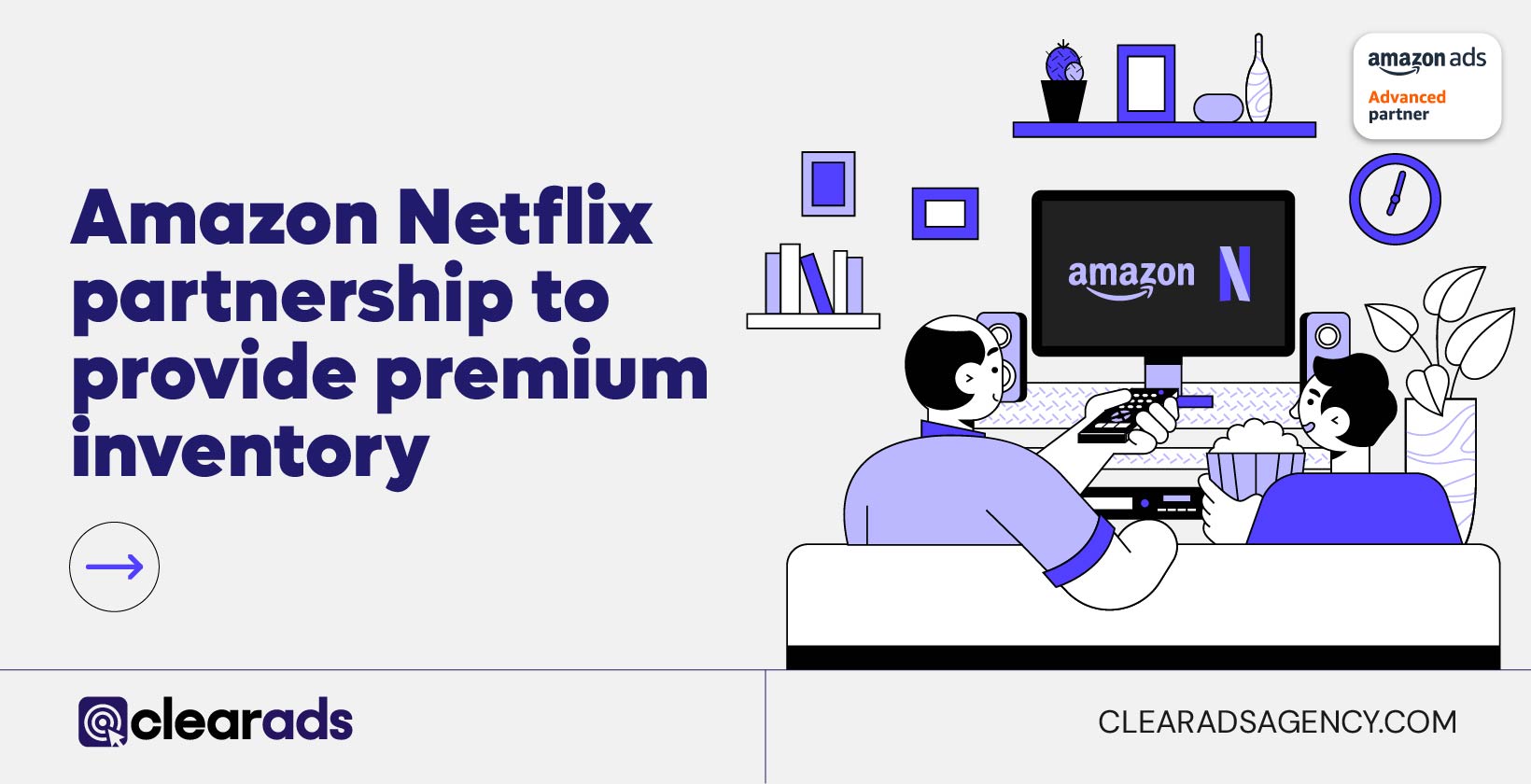Generating a whopping $31 billion in ad revenue in 2021, Amazon is undoubtedly one of the biggest advertising platforms in the world. As a result, paid advertising options like Sponsored Products and Sponsored Brands are increasingly being utilised by sellers as a way of increasing their sales. But boosting sales isn’t just about running pay-per-click campaigns. It’s about focusing on the organic side of advertising, too. This is where listing optimisation comes into play.
In today’s highly competitive landscape, paid ads alone aren’t going to cut it. PPC campaigns help with the first part of the equation: improving product visibility. But the second part – driving conversions – can only be achieved by optimising your Amazon product listings to build a powerfully persuasive product page. That means a page that motivates, inspires, and encourages buyers to commit.
As an Amazon seller, if you don’t already have an Amazon listing optimisation strategy, now’s the time to develop one. This guide will outline the essential elements that need to come together to create a robust plan of action.
Why Optimise Product Listings?
There are two primary reasons why Amazon listing optimisation is critical to success. Firstly, by optimising your listings, you’re ensuring consistency across all the products you sell on the platform. You’re ensuring potential buyers can connect every product back to your brand through your messaging, design, interaction with peer-generated content, and so on. This enables you to leverage the trust shoppers have in your brand to help sell various products.
Secondly, listing optimisation is essential for ensuring your products are easy for your target audience to discover. Amazon operates its search engine to ensure that users see the most relevant results. However, unlike PPC campaigns, Amazon’s search engine isn’t powered by bids but by the information contained within your product listings. Therefore, the more information you provide, the better the algorithm can match your products with high-quality leads.
Amazon’s A9 Algorithm
Amazon’s search engine runs off the company’s A9 algorithm. The algorithm is a series of rules that determines which product listings are displayed – and in what order – in each query’s search results. However, A9 is significantly different to other algorithms like Google’s. Google’s algorithm is heavily keyword-based, with some search intent and quality factors thrown in for good measure. A9, on the other hand, is only partly rooted in keywords and Amazon SEO. The rest is fuelled by sales and conversion data, with higher selling products getting preferential treatment.
There’s a reason for this, of course. Amazon deems higher selling products to be more attractive solutions for shoppers. So to provide the best results for shoppers, the platform will naturally rank a product that’s sold 5000 units higher in the search results than a similar product that’s only been bought once or twice.
This is one of the most important considerations for any Amazon seller. While keywords are still critical, much more needs to happen to ensure products have the best chance of being displayed and, therefore, the best opportunity to see. Sellers must ensure that, alongside their keyword efforts, they’re also optimising their Amazon listings – to enhance the shopper experience and appeal to the A9 algorithm – as part of a fully comprehensive strategy to boost sales.
How to Optimise Listings
Optimisation strategies can be applied to new and existing product listings. They can Amazon sellers increase sales with cost-effective organic techniques that supplement the impact of paid advertising campaigns.
A good optimisation strategy includes several components:
Keyword Research

Although keywords aren’t everything for the A9 algorithm, they’re still a necessary aspect and one that shouldn’t be overlooked. Therefore, finding relevant keywords and incorporating them naturally into product titles and descriptions is crucial.
Keyword research tools make the task of identifying appropriate terms with the most significant search volumes much less daunting. These should act as your primary keywords and help the algorithm connect the right products with the most suitable shoppers, helping to boost conversions and increase sales.
Search Terms
In addition to frontend keywords (the customer-facing keywords that appear in product titles and descriptions), backend keywords must also be considered. Shoppers don’t see these keywords, but the A9 algorithm does. This means adding additional data to inform the algorithm without impacting the customer experience.
Backend keywords are added to the ‘search terms’ field in Seller Central. But it’s important to remember that there’s a 250-byte space limit, and the algorithm won’t recognise any keywords appearing beyond that limit.
Product Titles
Product titles also require careful consideration when devising an optimisation strategy. Why? Because titles act as a customer’s first impression of your product. Users scrolling through results quickly scan different products to pick up on specific phrases that are important to them. So your product titles are an opportunity to capture attention at that moment.
A strong title should cover three vital aspects: the brand, size/quantity, and variant (e.g. colour). A good title will combine these elements into one short yet snappy summary.
Images
When scanning search results, shoppers look not just at titles but images. Therefore, every product listed on Amazon must have a ‘main image’, the default image that users will see in the SERPs and on your product listing page. As per Amazon’s image guidelines, these should be high-quality images with a pure white background.
For optimisation purposes, Amazon recommends adding five additional pictures to support the buyer journey and ensure shoppers can access all the visual information they need to make confident buying decisions.
Description

When it comes to product descriptions, sellers should be aiming for the two ‘A’s’. That’s A-rated content and A+ content. Together, they help ensure that every product description is optimised correctly to boost sales.
A-rated content ticks four crucial boxes:
- A great title
- Useful additional information across the description
- A suitable length for the reader, and
- Helpful imagery.
A+ content is an Amazon feature that helps enhance description layouts. By utilising both, sellers can connect descriptions with the needs of audiences.
Product Features
Most Amazon sellers will understand the importance of adding content to a product description, yet many overlook the power of including features and benefits as a separate, distinct optimisation task.
For a shopper, a simple bulleted list of product features acts as a sort of ‘screener’; it’s a way for customers to gather essential core information before deciding whether to invest their time reading the full product description. Keywords can be worked into this chunk of content but shouldn’t be the sole focus. A product features list is a place to write for humans, not machines.
Reviews
Customer reviews can play a significant role in increasing sales. Not only do they help to build confidence in new-to-brand shoppers, but they also help Amazon’s A9 algorithm to understand more about how users are interacting with your brand.
When customers leave product reviews, Amazon records this as a form of brand engagement, a factor the algorithm uses to assign a ranking to products. Therefore, the more reviews a product receives, the more Amazon views the listing as one that will attract, delight, and generate greater conversion rates.
Ratings

Ratings enable customers to share their thoughts on products through a 1 to 5-star system without writing up a full review. Ratings are essential to visibility – and, subsequently, sales – as the number of stars a product has affects how that product ranks.
Ratings are a tricky area, as a 5* rating from a customer doesn’t always equate to a 5* status; some ratings are ‘worth’ more than others, based on the recency of the rating and other factors. However, it’s still worth optimising your approach to drive the best possible scores.
8 Optimisation Tips
Here are some top tips from the ClearAds team to help Amazon sellers derive more value from their listing optimisation efforts and help to increase sales even further:
1. Don’t be afraid of bullet points
When creating your product description, use a more concise content format where possible.
While providing all critical product information is essential, you don’t always need to use lengthy sentences to get details across. Sometimes, it’s easier for shoppers to scan a bullet point list than to read paragraphs of text.
2. Show off different angles
When optimising your product imagery, try not to focus only on the front of the product. As Amazon recommends adding six images to a product listing in total, use at least one of these to show the product from a different perspective. A range of views can help shoppers gain a better feel for the product’s size, shape, and appearance, increasing their confidence in the listing.
3. Avoid reusing keywords
While keyword density matters when promoting products through Google, it doesn’t have the same impact on Amazon’s A9 algorithm. As backend keywords are subject to a 250-byte limit, reusing keywords can hinder your ability to provide the algorithm with as much valuable information as possible to maximise product sales.
4. Write for customers
The primary reason behind product listing optimisation is to help the A9 algorithm recognise and reward high-performing products. However, except for the search terms field, sellers should always write for people, not machines. Ultimately, the only way to increase sales is by engaging with buyers. And that will only happen if customers feel connected with your content.

5. Embrace negative feedback
With customer reviews playing an essential role in boosting sales, it’s natural to feel deterred by less-than-perfect feedback. However, savvy sellers know they can use less favourable reviews to their advantage, so they embrace that feedback. Negative reviews can be an opportunity to adapt the sales approach to meet customer needs better or demonstrate a commitment to customer service through considerate responses.
6. Keep it short & sweet
Although it’s crucial to provide the algorithm – and your customers – with all the necessary information, it’s also important not to overload them. There is a fine line. Try to keep descriptions and features direct and to the point, without lots of unnecessary fluff. When it comes to product titles, between 60 and 80 characters seems to be the sweet spot, according to Amazon research.
7. Track prices
One of the most important things to remember is that, even with the most heavily optimised titles, images, descriptions, and more, sellers will find it difficult to boost sales if their prices aren’t competitive. So don’t put all the effort into optimising your product listings, only to fall at the final hurdle. Instead, keep an eye on industry prices, and ensure your products are accessible to your target audience.
8. Manage inventory
Your listing optimisation efforts are unlikely to drive the results you’re hoping for if you’re struggling to manage your inventory. That’s because the A9 algorithm considers stock levels and won’t rank products that are out of stock. By maintaining adequate stock levels for the time of year, sellers can ensure that their efforts aren’t going to waste.
Tools & Resources
Are you looking for support in optimising your Amazon product listings? Multiple tools and resources are available to help you get the most out of your efforts.
The first and perhaps most obvious resource is Amazon itself. Amazon and its Seller Central platform contain a vast range of tools that empower sellers to enhance the effectiveness of their listings. Some of the most popular tools are the Amazon Search Terms Report, which can help with frontend and backend keyword research and the A/B testing functionality, which can help sellers make the best optimisation decisions by showing the differences in performance between two listing variations.
There are multiple third-party tools available, too, especially for keyword research. For example, Google’s Keyword Planner is a powerful tool as it provides data based on real-time user searches, providing sellers with timely insights into how customer search behaviours evolve and change in response to various factors.
And, of course, the ClearAds team is always here to help. Get in touch for expert advice, guidance, and tailored solutions to optimise product descriptions, engage with customers, and make your Amazon product listings work harder for your business.


